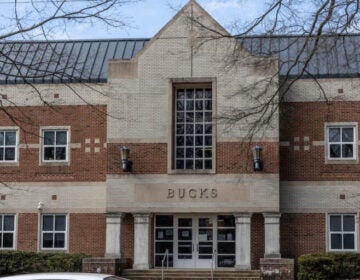Delta pushed most Philly-area school districts to keep virtual option; a few fear slippery slope
New Jersey forbade districts from offering virtual learning. But in Pennsylvania, it’s allowed — and many districts are taking advantage.
Listen 1:26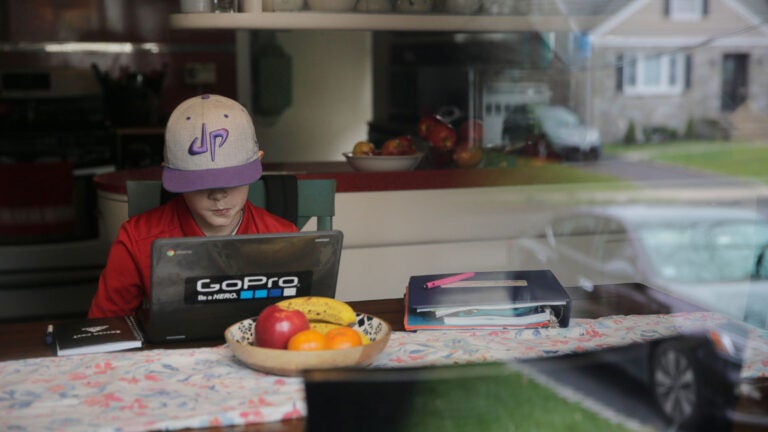
A young student attends virtual school from his home. (AP Photo/Seth Wenig)
Ask us about COVID-19: What questions do you have about the coronavirus and vaccines?
Virtual education may no longer be the dominant mode of learning as schools reopen this fall. But thanks to COVID’s long tail, and the emergence of the more infectious delta variant, online learning is still on the menu in most Southeastern Pennsylvania school districts.
Despite almost unanimous agreement among experts that in-person school should be the priority, many school leaders feel they need to give parents an online outlet.
“We’re going to commit the money and the resources to offer the very best virtual option we can for families,” said Christopher Dormer, superintendent of the Norristown Area School District. “It needs to be their choice right now.”
Philadelphia, the state’s largest district, is offering online classes through its virtual academy. Among 42 suburban districts that responded to WHYY’s inquiries on the subject, 36 (or 85%) said students in all grades would have the option to learn online. Another three said they’d offer online classes for certain grades.
Just three districts told WHYY that students would have to attend classes in person, with possible exceptions granted for students who have medical issues.
When the COVID pandemic took root in March 2020, school districts shuttered their buildings and offered all classes online. In the 18 months since, the needle has moved slowly, if haltingly, back toward normal.
As the 2021-22 school year begins, the overwhelming majority of districts — if not all of them — say they’ll offer a typical, five-day week of in-person classes.
That shift has left a new debate in its wake: Should districts preserve, in some form, an option for parents to keep their kids online?
Across the region there’s no consensus response to this question.
In contrast to Pennsylvania, New Jersey has forbidden districts from offering virtual classes, except in emergency situations where students are quarantining at home.
For Dormer in Norristown, giving parents an all-virtual choice has two benefits. First, it’s a service to households who may have students or adults at higher risk for COVID-related illness. Second, it could dissuade those same families from leaving the district for one of Pennsylvania’s tuition-free cyber charter schools, which saw an enrollment spike since the pandemic began.
“If I can serve 20, 30, 50 kids well and have them be part of our district and our family, then I feel like I have a commitment to offer them that option,” said Dormer.
So far, Dormer said, only about 1.5% of the district’s students have opted for Norristown’s virtual option. That’s consistent with what other districts report.
Pennridge in Bucks County said 1% of students opted for all-virtual. Montgomery County’s Upper Dublin School District said just 12 of its roughly 4,000 students chose the online option.
Some summer polling indicated that as many as a quarter of parents preferred an online option, with parents of color more inclined to favor virtual school.
So far in Philadelphia — where the vast majority of students are Black or Latino — 1,900 students have enrolled in the district’s virtual academy, according to a district spokesperson. Like in Norristown, that’s about 1.5% of all students enrolled.
‘Does it ever go away?’
Most experts — including the Centers for Disease Control and Prevention and the American Academy of Pediatrics — say the focus this fall should be on getting students back into the classroom.
While many in favor of an online option agree, they argue it’s important to offer a virtual fallback for families who don’t feel comfortable with in-person learning. That’s especially true now, they say, given students below age 12 aren’t eligible for vaccines.
Those against virtual school say it’s bad precedent to offer parents an inferior, online option while diverting attention and resources away from in-person learning. Given the protections provided by vaccination and the relatively low risk COVID presents to minors — with children accounting for fewer than one-quarter of 1% of all COVID-19 deaths in the U.S. — these advocates believe districts need to nudge parents back toward normalcy and away from choices that could extend COVID’s isolating effect on kids.
Some have argued that virtual schooling’s general ineffectiveness should compel districts to take it off the table. Just as governments force parents to send their kids to school — whether or not families feel it’s the right choice — so too should they mandate a return to in-person learning.
Upper Merion Area School District is among the few in the Philadelphia suburbs that will not offer a virtual option to start the year. Superintendent John Toleno said he wanted the district’s full attention on in-person learning — and making it as safe as possible. Upper Merion was among the earliest districts in the region to mandate masks, and the first to announce consequences for staff who aren’t vaccinated. Cheltenham and Lower Moreland Township districts also told WHYY they would not offer a virtual option.
Toleno says he’s gotten little criticism from parents on the decision. (Most pushback has come from parents who don’t want their kids to wear masks.)
Driving his thinking, he worried about a slippery slope if the district started a second consecutive year with online options on the table.
“When does it go away? Does it ever go away? Are you able to pull back once you’ve started?” he asked.
If cases spread in the district, Toleno says Upper Merion can “flip that switch” back to virtual. But to start the semester, he wanted to send a clear message to the school community:
“We’re going to open full-time. We’re going to pull this off. We’re going to make it work, and we’re going to do it to the best of our ability,” Toleno said.
Late shift to virtual
Early in the summer, it seemed many districts would follow the Upper Merion approach. In addition to New Jersey’s ban on virtual, New York City said it will not offer an online option.
In July, just 41% of districts in a sample of 100 large school districts planned to offer virtual alternatives, according to the University of Washington’s Center on Reinventing Public Education (CRPE). By the end of August, that number had more-than doubled to 92%, said CRPE’s Bree Dusseault.
“We’ve seen districts very quickly set up new, remote options,” said Dusseault. “I think a lot of districts are responding to the fact that a lot of parents are worried about sending their kids back to school and therefore feel it’s better to do some version of schooling than nothing at all.”
Many districts are also setting up quick-switch options that allow them to go virtual due to emergencies — COVID-related or otherwise, said Dusseault.
While the Pennsylvania chapter of the American Academy of Pediatrics recommends in-person school, Dr. Christina Master, co-chair of the academy’s school health committee, thinks it’s wise for districts to offer an online alternative if they have the capacity.
Researchers aren’t certain what conditions might elevate a child’s COVID risk, although the CDC lists children with genetic, neurologic, and metabolic conditions, or with congenital heart disease as those who might be at increased risk for severe illness.
Master understands why some families might want to keep their children at home, despite her “firm conviction that in-person is best for our kids.”
Master and her husband had to weigh whether or not to send their vaccinated son, a high school senior, back to classes at Haverford High School in Delaware County. Master’s husband is a transplant recipient and did not mount an immune response to the COVID-19 vaccine. Ultimately, the school district’s insistence on universal masking convinced the family it was safe enough to send their son to the classroom.
“There may be other reasons why a family wants their children to be able to be at home because of risk to others in the household,” she said. “And I think that has to be taken on a case-by-case basis.”
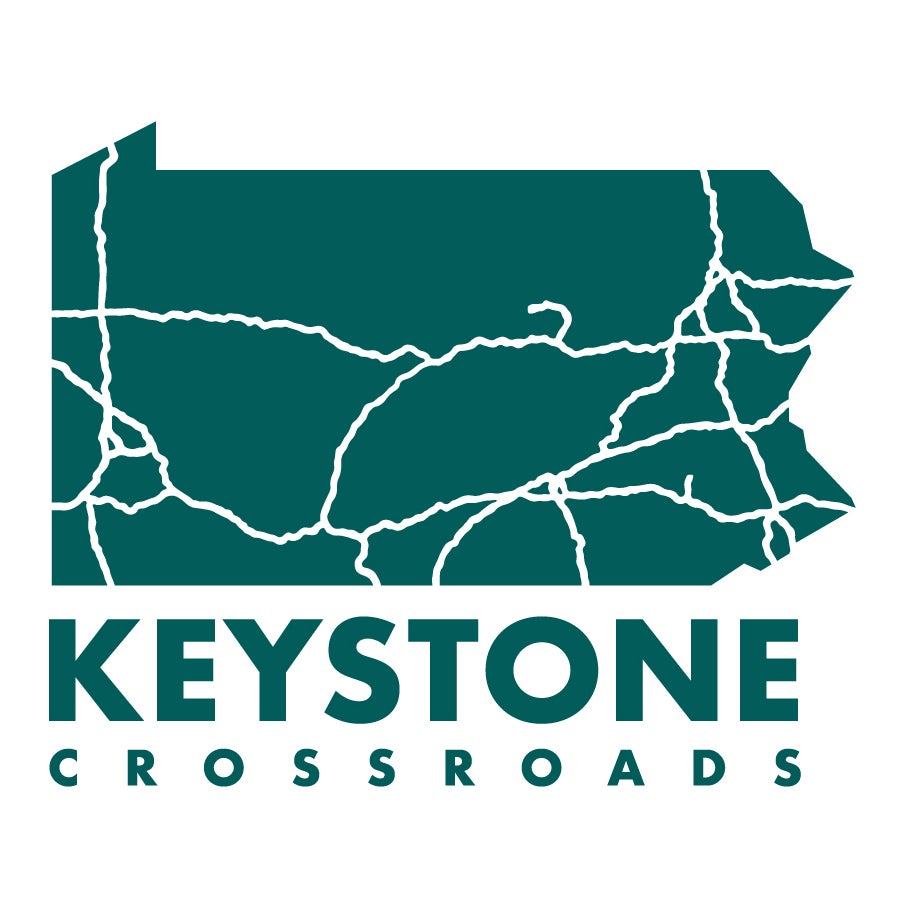
Get more Pennsylvania stories that matter
WHYY is your source for fact-based, in-depth journalism and information. As a nonprofit organization, we rely on financial support from readers like you. Please give today.




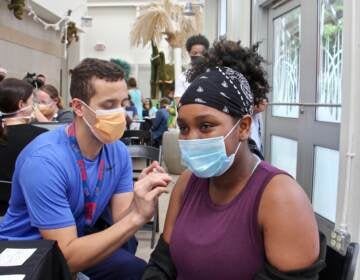
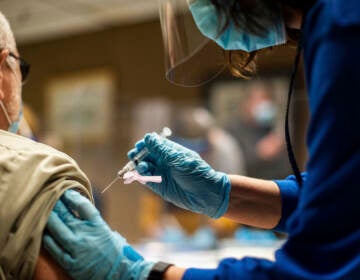
![CoronavirusPandemic_1024x512[1]](https://whyy.org/wp-content/uploads/2020/03/CoronavirusPandemic_1024x5121-300x150.jpg)

